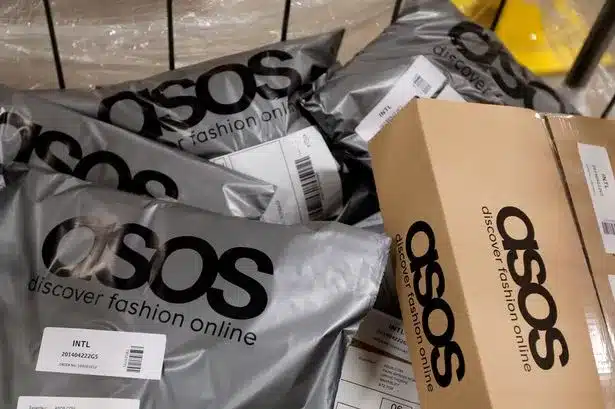Studies have shown that very fair return policies increase sales without any increment in returns. Furthermore, Web Retailer also reports that if your online business has at least forty per cent repeat consumers, you’re likely to have 50 % higher sales than online retailers who have 10 % repeat buyers.
In other words, repeat users are vital to your business. However, returns could be expensive.
Chain Store Age has reported on a study by the HRC Advisory (Human Rights Council) that shows that investments in online business infrastructure such as supply chain updates and online returns take 2-3 % off the top of online retail sales.
This investment would hit your bottom line. But, there are methods you could leverage returns to support your e-commerce business’s health and keep your consumers happy.
Ecommerce Returns by the Numbers
Your return estimate would depend on the kind of product you are selling and the kind of consumers you are selling to. If you’ve tons of repeat consumers who know your merchandise, as well as your e-commerce returns, are likely to be pretty lower than the average.
However, your e-commerce return average could go by as much as fifty per cent above normal at the end of the holiday season. Returned holiday gifts could be a headache for many online retailers.
Besides, shoes and clothing are returned at the highest amount year-round, primarily because consumers often purchase multiple sizes intending to return products that don’t fit.

The average ecommerce return rate
Because of the adaption in ecommerce return estimates, it is a lot tougher to pin down an industry estimate.
CNBC reported that online retailers often have ecommerce returns as high as 40 %, and clothing sites could see ecommerce return rates as high as 56 %.
It might be painful to provide refunds for almost a 3rd of the orders you ship, and it feels disappointing to pay for return shipping on top of it. However, returns are an essential service you offer to your consumers.
Think of ecommerce returns as the primary core aspect of your consumer retention program. Online reviews are a dominant way to inspire customer trust in your ecommerce business. An online buy is still a risk for the customer.
Two-thirds of users eager to know what is your return policy before they click the purchase button. This is even more essential if you want to expand as international ecommerce. If you create “returns” as simply as possible, almost all consumers will purchase from you again.
A survey by UPS (United Parcel Service) found that online shoppers research their buys and gravitate to shops with transparent policies. The study has found that 36 % of ecommerce shoppers had made a return in the previous 3 months.
73 % said that their experience with returns would affect their decision to purchase again from any web retailer. The returns experience can have a significant impact on your repeat sales as the initial sales experience.
What’s the Primary Reason Customers Return Purchases?
All of those Reasons for return will vary by brand and industry. The national survey across all industries reveals that fit is the main reason that tremendous customers return a product, with sixty-five per cent of shoppers citing this point for their buy returns.
Product information not suiting the product caused thirty-nine per cent of shoppers to return products, and 33 % said they returned items because they looked unique in person. There is also the issue of customers purchasing with the intent of returning.
Across all customers, thirty-five per cent are over-ordering when purchasing online. However, the rate is even higher among younger customers.
Among millennials, 53 % of purchasers intend to return items, and for Gen Z, this goes even higher to forty-six per cent. This behaviour varies by brand and industry.
Besides that, It isn’t likely that customers buying household goods or items like coffee will place orders with returns in mind. This behaviour is extreme in fashion brands, with 66 % of customers saying they ordered more products than they intended to have.
12 Best Practices for Your Online Refunds and Returns
Implementing an acceptable ecommerce return policy is not rocket science. Here are twelve best practices to deduct your e-commerce return rate and also increase customer loyalty.
1.) Your online returns policy should be easy to find
Whatever your online return policy might be. It must be clear enough, easy to find, and easy to read on your website.
Whether it is an FAQ section or a laid-out single page, you must add prominent links that make your online return policy easy to find on your mobile and website.
Having a worded return policy and more comfortable to find also develops trust with your consumers and leaves less area for frustration as they figure out how and when to make returns.
This trust could lead to increased sales. Besides that, your online return policy’s clear expectations mean you get some people calling your call centre about e-commerce returns, which saves you money and time.
2.) Include crystal clear deadlines in your online return policy
Even though your online return policy was an essential part of the purchasing decision, most of your consumers didn’t expect they would have to return something.
Please do not make your policy so complicated that an advanced degree is needed to make sense of it and provide a deadline, so your consumers get it done.
Do not hide your deadline in the fine print; you should state it prominently in bold alphabet in more than one place on the returns page.
A straightforward ecommerce returns policy that sets expectations for the duration period during which consumers could return a product permits your consumers to understand what is needed in the returns process.
They’re less likely to blame you for the return which goes wrong if they know your return deadline.
You have to keep in mind a clear timeline for returns could also help you predict revenue. You could book the profit for older sales than the return deadline without any fear that you will have to provide a refund.
3.) Accept ecommerce returns via shipment or in-store, if you have one.
Everyone has not both an online shop and a brick-and-mortar store. However, if you do, you will get a massive benefit in consumer satisfaction when you permit buyers to make online returns at your physical location.
Some of your consumers prefer to return in-store, so provide them with that option. Additionally, as pointed out by the channel, an in-store return is an excellent opportunity for an upsell.
More than two-thirds of consumers will purchase something else when they come to make a return. When a consumer returns one product, you could show them why another may be better, and you may even convince them to make that buy again with a different approach.
4.) Make return labels easy to print
When you offer an online portal that makes returns easy, you save a lot of time for your customers and you. Let consumers view their orders and choose which products they are returning.
From there, it must just take a click to print a return label.
Making the return operation pretty more straightforward helps your consumers make their returns faster and with less hassle. Quicker returns mean a faster turnaround for you.
By providing your consumers the incentive to easily and quickly return an item, you spend less time with a deducted inventory. That permits you to get your products into another customer’s hands faster.
On top of that, an online returns operation protects you from return fraud. Some customers would try to take advantage of returns by claiming that everything is inside the return box when it is not.
Others might be pretty confused. To overcome these problems, make a return list showing all the products being sent back. Ask your consumer to print the list and then put it in the box with returns.
This pick list would help to keep your consumers honest and make it much easier for the fulfilment department to determine if any online return is in order.
5.) Copy your return policy from the pros
You can find out through error and trial what return policies work for your online business. Instead, why not get some experience from the experts – other online retailers?
You will have to tweak many things once you put your online returns policy into practice. But you would get a head start when you develop on the experience of other retailers.
Visit as many ecommerce websites as you like and also study their return policies. Steal the aspects you want from successful online retailers to make your own online returns guidelines. BigCommerce has compiled a few great examples and tips to provide you with a head start.
6.) Pay for free return shipping.
Returns are one of the most considerable pitfalls for online businesses because the rates could easily add up and hit the bottom line. But free shipping on every return is expected in current days.
As reported by The Web Retailer, eighty-eight per cent of customers surveyed charge-free return shipping as “very important” or “important” to their buying decisions. So, while not paying for the return shipping may save you some cash, it can cost you consumers.
If the price of return shipping is a lot much for the business, then get creative. For example, you can state in your return policy that you will pay for return shipping on orders over £50.
This can encourage your consumers to purchase some additional products to bump themselves over the limit while making sure that you’re not spending more on return shipping than the products’ price.
7.) Illustrate your returns operation
We are all pretty overwhelmed by how much content we require to absorb in our hyper-connected globe. If your online returns policies are spelt out in a webpage of fine print, dense, your consumers’ eyes will glaze over.
This is the opposite of the transparency that is so essential for a successful returns policy. Do what you have to do on your web pages and make your policy easy to understand with icons, graphics, and images. Besides, illustrations provide cues to help your consumers easily understand how the return process works on your website.
A good-designed page about your returns policy is an opportunity to make a human connection with your consumer. Graphics play an essential role in making that connection. You could even utilize graphics to inject a little humour into an otherwise dry subject.
8.) Watch your profit margins.
Returns could erase your profit on sale products, so you should consider a returns policy that excludes items you sell with a steep discount. Ensure that your retail costs include a margin to cover operating expenses. The price of returns is your operating expense, so have that in your rating calculations.
9.) Understand the laws governing returns
Your online return policy isn’t just a good business practice – it is the law. In many countries, you should accept defective products.
Additional legislation might apply to the returns policy. Save yourself the embarrassment and the appearance of being shady by keeping on top of the latest legal needs for online returns.
10.) Re-engage customers
Do not consider a return at the end of the line with your consumers. That consumer was interested enough in the business to place an order; there is a good chance you could lure them back. After a return, re-engage with your consumer to keep the relationship alive.
If you control the return right, you leave your consumer with a fuzzy, warm feeling. That person can become a loyal and profitable consumer.
11.) Utilise online returns as an opportunity to show consumers how much you care
You may find returns demoralising and frustrating. However, it will be much better if you never let your consumers see this. Show empathy when a consumer expresses frustration, and you could turn their anger into gratitude. Thank your consumers for doing their part in completing the returns operation.
Your terrific customer service and positive attitude would be a huge factor in turning returns in future sales and winning loyal consumers.
12.) Continuously update and review your online return policies.
Your return policy should change because online retail changes continuously as well. It is not enough to track your returns; utilise the data you gather to keep your return policies relevant to your consumers and your business. Besides that, If your returns spike, figure out how, and adjust the strategy accordingly.
13.) High-Quality Product Images
Explicit, high-quality images and true-to-colour are significant. The consumer is required to be able to imagine the products without actually seeing the product in person. The ideal way to help them with this is by giving many images of the product: back, front, close-up of the garment if it has a design or print, and the apparel on the actual person to see how it sits. If possible, provide a 360-degree viewing ability. We would include here the adoption of all the latest technology including Augmented Reality for the highest quality UX.
14.) Follow winning online return policies.
- Include a form of the refund process in your policy. Be clear about what type of refunds you provide, such as a refund to an exchange, credit card, or store credit. Your consumers need to know what type of refund they could expect before purchasing your item.
- Be transparent. Put some links to your returns policy in prominent locations on all pages. List your consumer service contact information at the bottom and top of the webpage. Permit your consumers to track returns and refunds the same way they track orders. Send email confirmation. Transparency would win you a ton of goodwill.
- Set a time limit for refunds. Providing your customers between thirty and ninety days to send back a buy is a ton of time, in most cases. A duration limit would make your inventory management pretty much more straightforward and deduct your losses on the returns.
- Be flexible. Put a reasonable duration limit on your returns, making a lot of sense for you and your online business – but do not be a stickler. Permit your consumer service reps some discretion. Whenever a consumer wants to return an item on day thirty-two of a thirty-day return policy, honour it. A bit of consideration like this goes a long way.
- Keep it positive. Yes, it’s the return policy. However, it does not have to be full of punitive and harsh language. Keep your tone friendly and light when you communicate the information your consumers require.
It goes without saying that if you are personalising your product selections offered to each consumer, such as by using hyper-personalisation solutions, then you are achieving the highest level of potential sales available across all media available. Offering products that they want rather than might like, delivers untold advantages, not least that the RoR drops through the floor.
Conclusion
Undoubtedly, how to decrease the product return percentage is a hot topic, and it always will be, as nothing hurts more than seeing a successful sale convert into a returned one. It’s a big failure if this percentage is over the normal limit.
Being optimistic, you’ll be able to increase the success percentage, and obviously, your income is also going to increase. The return policy is a must, but you need to be pretty sharp while narrating it, and it should be something that never offends a potential buyer.
The rest of the success story is written up there, and in case you’ve missed a tip or two, it is still not too late! Further reading on returns published by the IMRG is their Returns Review.





